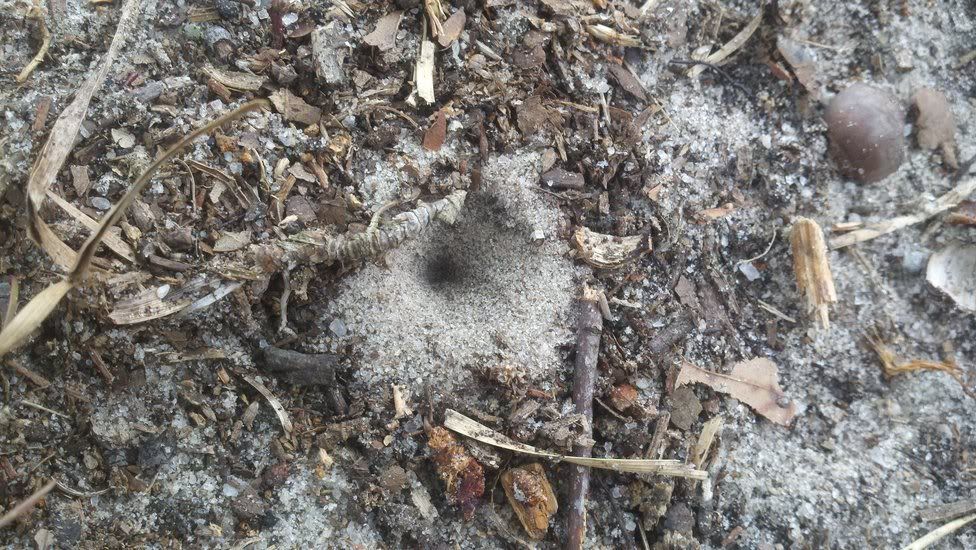 | |||||||
| An antlion larvae. There are numerous species, all in the Family Myrmeleontidae which literally means "ant lion" |
 |
| Adult antlion |
The reason they are called "antlions" is because of the fact that as larvae, they specialize in eating ants. Those mounds are used to trap the ants and the shape of that mound and the antlion's behavior is such that once an ant falls in, it's almost impossible for the ant to get out. Once captured, the antlion paralyzes and then sucks the juices out of its prey. It will then discard the dried out husk with a flick of its head. Also, apparently, the larger the mound, the hungrier the antlion. There are some very interesting videos of the entire process to be found on the internet.
 |
| An antlion mound I found today |
The Biology department at the college where I earned my Bachelors degree did some interesting experiments on antlions, including such things as if they have a preferred species of ant prey and how large does a stone have to be before the antlion can no longer fling it out of the way. During the experiment, the professors found Cyphomyrmex rimosus ants, which proved to have interesting behavior that helped prevent the antlions from eating them. One of the researcher's interest in the little fungus-growers eventually led to me working with them.
Here's a video about these odd insects from National Geographic:
Source is the Antlion Pit: A Doodlebug Anthology. First two images are from Wikimedia Commons under a creative commons license or the copyright holder allows any use: one, two

The first time the Antlion was made aware to me was in Half-Life 2. It was like: "DAMN! YOU SCARY!"
ReplyDeleteI am just glad they're not human-sized in real life.
The adults are everywhere here in the summer. I never knew that's what they were, though.
ReplyDeleteDave, I wouldn't want to see a life-sized one either!
ReplyDeleteJess, I almost wanted to ask about damselflies, but then I remembered you live in a desert-y area. I don't know if there are any other insects that it could be, but I agree that antlions are probably at least part of it!